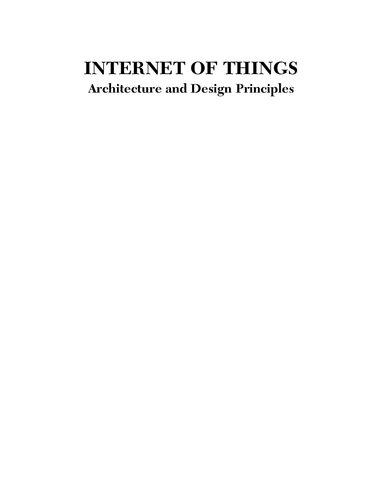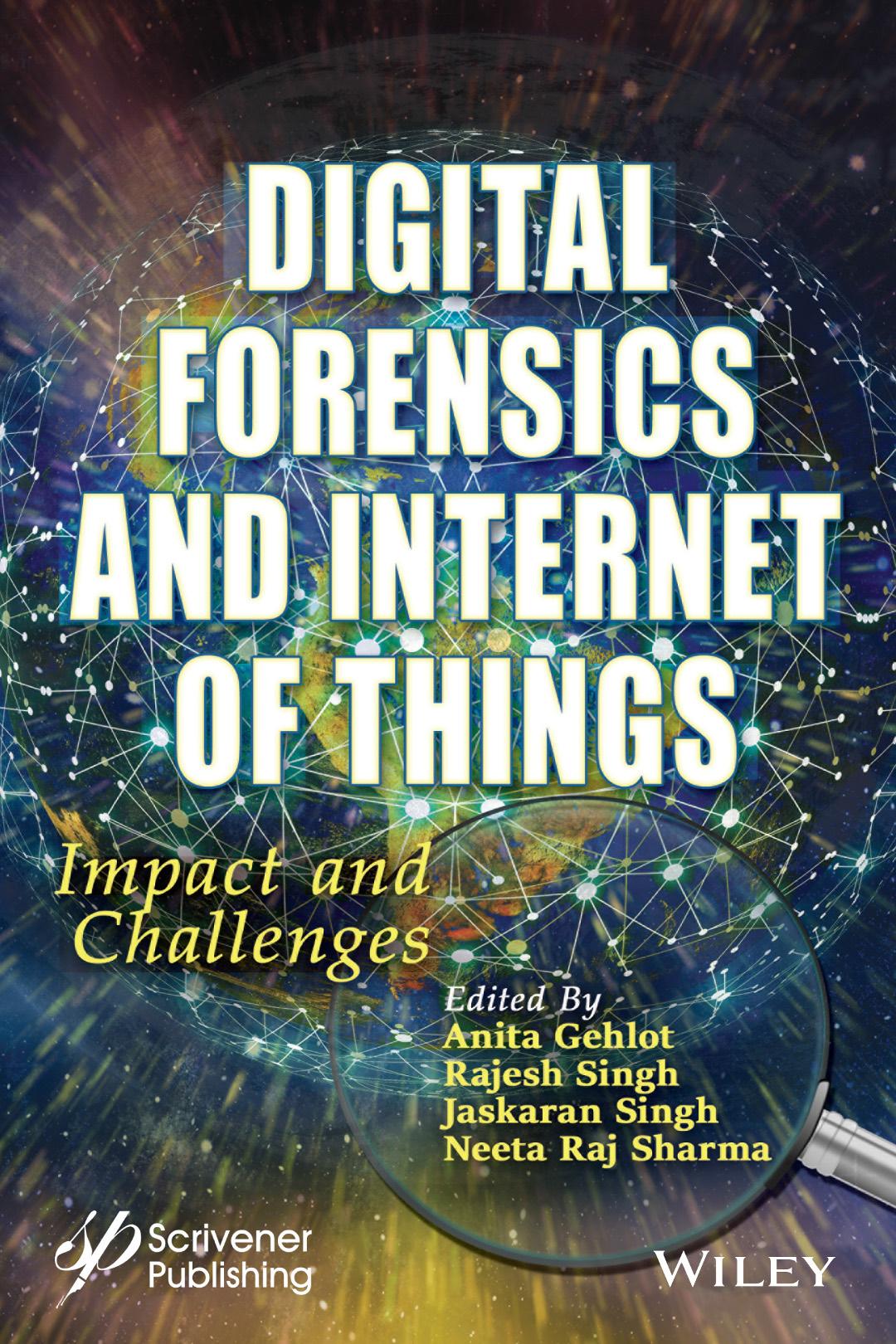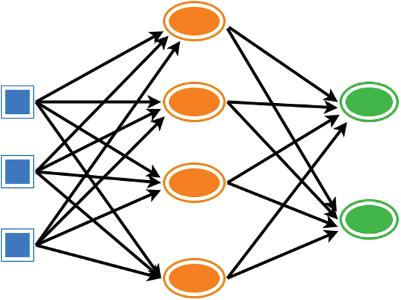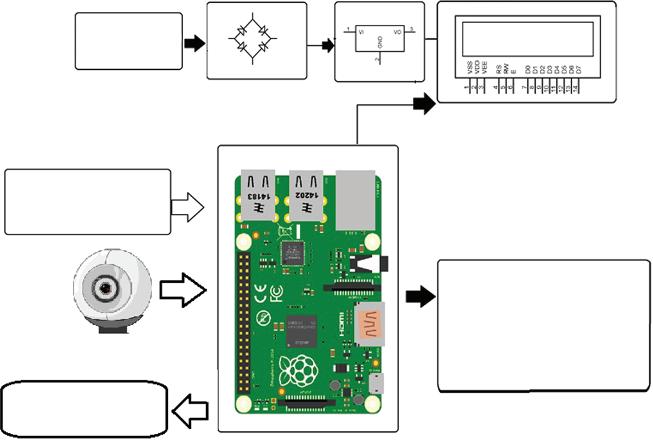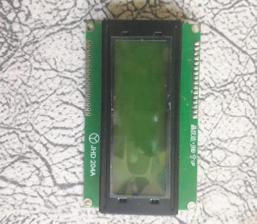Digital Forensics and Internet of Things
Impact and Challenges
Edited by Anita Gehlot
Uttaranchal Institute of Technology, Uttaranchal University, India
Rajesh Singh
Uttaranchal Institute of Technology, Uttaranchal University, India
Jaskaran Singh
Forensic Sciences, Sharda University, India and
Neeta Raj Sharma
Biotechnology & BioSciences, Lovely Professional University, India
This edition first published 2022 by John Wiley & Sons, Inc., 111 River Street, Hoboken, NJ 07030, USA and Scrivener Publishing LLC, 100 Cummings Center, Suite 541J, Beverly, MA 01915, USA © 2022 Scrivener Publishing LLC
For more information about Scrivener publications please visit www.scrivenerpublishing.com.
All rights reserved. No part of this publication may be reproduced, stored in a retrieval system, or transmitted, in any form or by any means, electronic, mechanical, photocopying, recording, or otherwise, except as permitted by law. Advice on how to obtain permission to reuse material from this title is available at http://www.wiley.com/go/permissions.
Wiley Global Headquarters
111 River Street, Hoboken, NJ 07030, USA
For details of our global editorial offices, customer services, and more information about Wiley products visit us at www.wiley.com.
Limit of Liability/Disclaimer of Warranty
While the publisher and authors have used their best efforts in preparing this work, they make no representations or warranties with respect to the accuracy or completeness of the contents of this work and specifically disclaim all warranties, including without limitation any implied warranties of merchantability or fitness for a particular purpose. No warranty may be created or extended by sales representatives, written sales materials, or promotional statements for this work. The fact that an organization, website, or product is referred to in this work as a citation and/or potential source of further information does not mean that the publisher and authors endorse the information or services the organization, website, or product may provide or recommendations it may make. This work is sold with the understanding that the publisher is not engaged in rendering professional services. The advice and strategies contained herein may not be suitable for your situation. You should consult with a specialist where appropriate. Neither the publisher nor authors shall be liable for any loss of profit or any other commercial damages, including but not limited to special, incidental, consequential, or other damages. Further, readers should be aware that websites listed in this work may have changed or disappeared between when this work was written and when it is read.
Library of Congress Cataloging-in-Publication Data
ISBN 978-1-119-76878-4
Cover image: Pixabay.Com
Cover design by Russell Richardson
Set in size of 11pt and Minion Pro by Manila Typesetting Company, Makati, Philippines
5.4.2
6.3.3
6.5
7.1
7.3
7.4
8.9
8.9.1
8.9.2
Khaleelu
Adlakha and Dolly Sharma
Manoj Sindhwani, Charanjeet Singh and Rajeshwar
Gift Chimkonda Chichele
Preface
This book provides an opportunity to readers in the era of digitalization of forensic science and application of Internet of Things for the provision of technical benefits to the stakeholders. IoT forensics attempts to align its workflow to that of any forensics practice—investigators identify, interpret, preserve, analyse and present any relevant data. Like any investigation, a timeline is constructed, and, with the aid of smart devices providing data, investigators might be able to capture much more specific data points than in a traditional crime.
Currently, there exists no defined and accepted standard for IoT forensic investigations. This can be attributed in part to the heterogeneous nature of IoT.
Chapters 1-8 culminates in the amalgamation of Xilix FPGA and Xilix IP cores, VANET and IOT. The application of such tools in the forensic sciences is the gist of the book. However, Chapters 9-15 discuss the core aspects of machine learning in the areas of healthcare, criminal profiling and digital cyber investigation.
Cyber and digital frauds are the hallmark of today’s era. There is an urgent need to produce knowledgeable resources for curbing such crimes; thus, this book will serve as a perfect instance for getting the best source of expertise. Additionally, it serves as a revolutionary merit for identification and apprehension of criminals in a smarter way.
Case studies related to digital and cyber forensics is a key feature of the book. The content of chapters serves as a jewel in the crown for law enforcement agencies, advocates, forensic experts and students. Hence, we hope the book is an asset for readers and users as they become aware of the ubiquitous societal issues of digital and cybercrimes. Finally, we owe a large debt of gratitude to Scrivener Publishing and Wiley and all authors of the book in particular, for their continued support and patience.
Prof. (Dr.) Anita Gehlot Uttaranchal University, India
Prof. (Dr.) Rajesh Singh Uttaranchal University, India
Dr. Jaskaran Singh Sharda University, India
Dr. Neeta Raj Sharma Lovely Professional University, India
The Editors February 2022
1 Face Recognition–Based Surveillance System: A New Paradigm for Criminal Profiling
Payal Singh, Sneha Gupta, Vipul Gupta, Piyush Kuchhal and Arpit Jain*
Electrical and Electronics Engineering Department, UPES, Dehradun, India
Abstract
Security is the most important aspect in any spheres. We have to ensure these technologies evolve along with the advancement of various technology in the field of machine vision and artificial intelligence. The system of facial detection has become a topic of interest. It is widely used for human identification due to its capabilities that give accurate results. It is majorly used for security purposes. This manuscript provides method of face detection and its applications. Using this method, locking system will be designed to ensure safety and security in all types of places. Surveillance systems help in close observation and looking for improper behavior. Then, it performs actions on the data that has been provides to it.
Keywords: Face recognition, python, Raspberry Pi, deep learning, locking system, image processing, eigen faces, fisher faces
1.1 Introduction
Face detection is the method which is pre-owned to identify or verify an individual’s identity using their face. There can also be image, video, audio, or audio-visual element given to the system. Generally, the data is used to access a system or service. This can be performed in two variations depending on its application. First is when the facial recognition system is taking the input (face) for the first time and registering it for analysis.
*Corresponding author: arpit.eic@gmail.com
Anita Gehlot, Rajesh Singh, Jaskaran Singh and Neeta Raj Sharma (eds.) Digital Forensics and Internet of Things: Impact and Challenges, (1–18) © 2022 Scrivener Publishing LLC
Second is when the user is authenticated prior to being registered. In this, the incoming data is checked from the existing data in the database, and then, access or permission is granted.
The most important aspect of any security system is to properly identify individuals entering or taking an exit through the entrance. There are several systems that use passwords or pins for identification purposes. But these types of systems are not very effective as these pins and passwords can be stolen or copied easily. The best solution to this is using one’s biometric trait. These are highly effective and useful. This system is designed for prevention of security threats in exceptionally secure regions with lesser power utilization and more dependable independent security gadget.
In this paper [1], the researcher has explained about the ongoing development in subject of facial acknowledgment, and executing features check along with acknowledgment proficiently at extent shows genuine difficulties at present methodologies. Here, we introduce a framework, called FaceNet, which straightforwardly takes in planning from facial pictures till the minimal Euclidean space which removes straightforwardly relate to the proportion of features likeness. When its area has been created, undertakings, like check with bunching, can handily executed apply quality strategies followed by FaceNet embeddings as peak vectors. In [2], the creators have expressed their technique using a significant convolutional network ready to directly smooth out the genuine introducing, rather than a moderate bottleneck layer as in past significant learning moves close. To get ready, we use triplets of by and large changed organizing/non-planning with face patches made using an original online threesome mining strategy. The benefit of our strategy is much more conspicuous real capability: We achieve top tier face affirmation execution using only 128-bytes per face. On the extensively used Named Countenances in the Wild (LFW) dataset, our structure achieves another record exactness of 99.63%. Our structure cuts the misstep rate conversely with the best dispersed result by 30% on both datasets. We likewise present the idea of consonant embedding, which portray various variants of face embedding (delivered by various organizations) that are viable to one another and consider direct correlation between one another. This paper [3] presents colossal extension face dataset named VGGFace2. The dataset contains 3.31 million pictures of 9,131 subjects, with a typical of 362.6 pictures for each subject. Pictures are downloaded from Google Picture Look and have colossal assortments in present, age, edification, identity, and calling (for instance, performers, contenders, and government authorities). The dataset was accumulated considering three goals: to have both incalculable characters and besides a gigantic number of pictures for each character; to cover a tremendous
extent of stance, age, and personality; and to restrict the imprint upheaval. We depict how the dataset was assembled, explicitly the robotized and manual isolating stages to ensure a high accuracy for the photos of each character. To assess face affirmation execution using the new dataset, we train ResNet-50 (with and without Crush and-Excitation blocks) Convolutional Neural Organizations on VGGFace2, on MS-Celeb-1M, and on their affiliation and show that readiness on VGGFace2 prompts further developed affirmation execution over stance and age. Finally, using the models ready on these datasets, we display state of the art execution on all the IARPA Janus face affirmation benchmarks, for instance, IJB-A, IJB-B, and IJB-C, outperforming the previous top tier by an enormous edge. Datasets and models are straightforwardly open [4, 5] Late profound learning-based face detection strategies have accomplished extraordinary execution, yet it actually stays testing to perceive exceptionally low-goal question face like 28 × 28 pixels when CCTV camera is far from the gotten subject. Such face with especially low objective is completely out of detail information of the face character diverged from normal objective in a presentation and subtle relating faces in that. To this end, we propose a Goal Invariant Model (Edge) for having a tendency to such cross-objective face affirmation issues, with three indisputable interests.
In [6, 7] The ANN requires 960 inputs and 94 neurons to yield layer in order to recognize their countenances. This organization is two-layer log-sigmoid organization. This exchange work is taken on the grounds that its yield range (0 to 1) is ideal for figuring out how to yield Boolean qualities. In [8], face recognition utilizing profound learning strategy is utilized. Profound learning is a piece of the broader gathering of AI strategies dependent on learning information portrayals, instead of work oriented calculations. Training is overseen, semi-coordinated, and solo. Combining profound training, the framework has enhanced every now and then. A few pictures of approving client are utilized as the information base of framework [9]. Face recognition is perhaps the main uses of biometrics-based validation framework over the most recent couple of many years. Face recognition is somewhat recognition task design, where a face is ordered as either known or obscure after contrasting it and the pictures of a realized individual put away in the information base. Face recognition is a test, given the certain fluctuation in data in light of arbitrary variety across various individuals, including methodical varieties from different factors like easing up conditions and posture [10]. PCA, LDA, and Bayesian investigation are the three most agent subspace face recognition draws near. In this paper, we show that they can be bound together under a similar system. We first model face contrast with three
segments: inborn distinction, change contrast, and commotion. A bound together structure is then built by utilizing this face contrast model and a definite subspace investigation on the three parts. We clarify the natural relationship among various subspace techniques and their exceptional commitments to the extraction of separating data from the face distinction. In view of the system, a bound together subspace examination strategy is created utilizing PCA, Bayes, and LDA as three stages. A 3D boundary space is built utilizing the three subspace measurements as tomahawks. Looking through this boundary space, we accomplish preferred recognition execution over standard subspace strategies. In this [11], face recognition frameworks have been commanding high notice from business market perspective, just, as example, recognition field. Face recognition has gotten significant consideration from explores in biometrics, design recognition field and PC vision networks. The face recognition frameworks can extricate the highlights of face and look at this with the current data set. The faces considered here for examination are still faces. Feature recognition of faces from still and clip pictures is arising as a functioning examination region. The present paper is figured dependent on still or video pictures caught by a web cam [12]. In this, they portray a multi-reason picture classifier and its application to a wide combination of picture gathering issues without the compensation of plan precision. Yet, the classifier was at first developed to address high substance screening; it was found incredibly effective in picture request tasks outside the degree of Cell Science [13]. Face acknowledgment is a specific and hardcase of article acknowledgment. Countenances are very sure things whose most normal appearance (forward looking countenances) by and large seems to be similar. Inconspicuous changes make the appearances remarkable. In this manner, in a customary incorporate space, forward looking appearances will outline a thick group, and standard model acknowledgment techniques will all things considered miss the mark to segregate between them. There are two essential sorts of the face acknowledgment systems. The first is to check if an individual excellent before a camera is a person from a bound social affair of people (20–500 individuals) or not. Generally, such structures are used to will control to structures, PCs, etc., the peculiarities of such systems are steady of response and little affectability to the checking singular position and appearance evolving. Frameworks of the resulting sort recognize a person by photo looking in a tremendous informational collection or insist its nonattendance. Such a structure should work with an informational index containing 1,000–1,000,000 pictures. It might work in detached manner. We endeavor to design a plan of the ensuing kind [14].
Face recognition has gotten significant consideration from scientists in biometrics, PC vision, design recognition, and psychological brain research networks due to the expanded consideration being given to security, man-machine correspondence, content-based picture recovery, and picture/video coding. We have proposed two mechanized recognition standards to propel face recognition innovation. Three significant assignments associated with face recognition frameworks are (i) face identification, (ii) face demonstrating, and (iii) face coordinating. We have built up a face recognition calculation for shading pictures within the sight of different lighting conditions just as unpredictable foundations [15]. Like a unique finger impression search framework, face acknowledgment innovation can help law authorization offices in recognizing suspects or finding missing people. To begin with, RIM is a novel and brought together profound design, containing a Face Hallucination sub-Net (FHN) and a Heterogeneous Acknowledgment sub-Net (HRN), which are commonly academic beginning to end. Second, FHN is an especially arranged tri-way generative quantitative and abstract assessments on a couple benchmarks show the power of the proposed model over the state of human articulations. Codes and models will be conveyed upon affirmation [16]. In this paper, as per the creator, the facial acknowledgment has become a central issue for a staggering number of subject matter experts. As of now, there are a phenomenal number of methodology for facial acknowledgment; anyway, in this investigation, we base on the use of significant learning. The issues with current facial acknowledgment convection structures are that they are made in non-mobile phones. This assessment intends to develop a facial acknowledgment structure completed in a computerized aeronautical vehicle of the quadcopter type. While it is legitimate, there are quadcopters prepared for recognizing faces just as shapes and following them; anyway, most are for no specific explanation and entertainment. This investigation bases on the facial acknowledgment of people with criminal records, for which a neural association is ready. The Caffe framework is used for the planning of a convolutional neural association. The system is made on the NVIDIA Jetson TX2 motherboard. The arrangement and improvement of the quadcopter are managed without any planning since we need the UAV for conforming to our requirements. This assessment hopes to decrease fierceness and bad behavior in Latin America [17]. The proposed method is coding and translating of face pictures, stressing the huge nearby and worldwide highlights. In the language of data hypothesis, the applicable data in a face picture is separated, encoded, and afterward contrasted and a data set of models. The proposed strategy is
autonomous of any judgment of highlights (open/shut eyes, distinctive looks, and with and without glasses) [18]. This paper gives a short study of the basic concepts and calculations utilized for AI and its applications. We start with a more extensive meaning of machine learning and afterward present different learning modalities including supervised and solo techniques and profound learning paradigms. In the remainder of the paper, we examine applications of machine learning calculations in different fields including pattern recognition, sensor organizations, oddity location, Internet of Things (IoT), and well-being observing [19]. Future registering (FC) is an innovation of genuine Web of things on distributed computing concerning IT intermingling that has arisen quickly as an energizing new industry and life worldview. Future figuring is being utilized to incorporate the cloud, huge information, and cloud server farms that are the megatrends of the processing business. This innovation is making another future market that is unique in relation to the past and is developing toward continuously dissolving the current market. Web of things is a huge and dynamic region and is advancing at a quick speed. The acknowledgment of the Web of things vision brings ICT innovations nearer to numerous parts of genuine confronting major issues like a dangerous atmospheric deviation, climate security, and energy saving money on distributed computing. Cutting edge innovations in detecting, preparing, correspondence, and administrations are prompting IoT administration in our life like industry, armed force, and life ideal models on distributed computing climate [20]. At present, the quantity of robberies and character extortion has regularly been accounted for and has become huge issues. Customary ways for individual recognizable proof require outer component, like key, security secret word, RFID card, and ID card, to approach into a private resource or entering public space. Numerous cycles, for example, drawing out cash from banks requires secret word. Other such stopping in private space would likewise require stopping ticket. For certain houses, the house key is vital. Be that as it may, this strategy additionally has a few burdens, for example, losing key and failing to remember secret phrase. At the point when this occurs, it tends to be bothered to recuperate back.
1.2 Image Processing
Face recognition system is subcategorized in two segments. The primary includes processing of the image, and the secondary includes techniques for recognition.
Segmentation
The processing of the image segment includes of image accession, image pre-processing, image segmentation, image description, and image recognition. The second part includes the use of artificial intelligence. Fundamental steps in image processing are (as shown in Figure 1.1):
a. Image accession: to obtain an image digitally.
b. Image pre-processing: intensify the image in processes that increment the probability of advancement of the additional procedures.
c. Image segmentation: divide a given image in its elemental segment of parts.
d. Image representation: transform the given data into a suitable manner for the further procedure.
e. Image description: bring out the attribute which outcomes in some computable intelligence of interest of parts that are primary for distinguishing one class of parts from another.
f. Image recognition: allocate a tag to the parts based on the data delivered from its representation.
1.3 Deep Learning
It is a machine-based program which imitates the function of human intelligence. It can be considered as a subdivision of machine learning. As machine learning uses simpler concepts, and the deep learning makes used artificial neural networks in order to mimic how humans think and learn.
Figure 1.1 Fundamental steps of image processing in face recognition.
This learning is categorized into supervised, semi-supervised, or unsupervised.
Deep learning can be constructed with the help of connected layers:
• The foremost layer is known as the input layer.
• The bottom-most layer is known as the output layer.
• All the in between layers are known as the hidden layers. Here, the word deep indicates the connections between different the neurons.
Figure 1.2 depicts a neural network consisting of an input layer, a hidden layer, and an output layer. The hidden layers consist of neurons. Here, the neurons are interlinked with one another. The neurons help to proceed and transfer the given signal it accepts from the above layer. The stability of signal depends upon the factors of weight, bias, and the activation function.
A deep neural network produces accuracy in numerous tasks and might be from object detection to face recognition. This does not require any kind of predefined knowledge exclusively coded which indicates that it can learn automatically.
The Deep Learning process includes the following:
• Understanding the problem
• Identifying the data
• Selecting the Deep Learning algorithm
• Training the model
• Testing the model
Deep neural network is a very strong tool in order to construct and predict an attainable result. It is an expert in pattern discovery and prediction
Figure 1.2 Layers of the model.
that is knowledge-based. Deep learning algorithms are keen to provide 41% more accurate results when compared to machine learning algorithm in case classification of image and 27% better fit in case of recognizing of face and 25% in recognizing of voice.
1.3.1 Neural Network
A neural network is an instrument that is designed to model in the similar way in which the brain responds or executes a task or function; it is usually simulated in digital computer-based software or carried out by using electronic components. It can resemble the brain in the following aspects:
• The knowledge is obtained by the network from its surrounding with the help of a learning procedure.
• Interneuron link strength, known as synaptic weight, is used to accumulate the obtained knowledge.
• The process that is operated to execute the learning procedure is known as the learning algorithm; the purpose of which is to reform the synaptic weights of the network in a well-organized mode to accomplish the desired layout objective.
• It is also possible to improve its own topology.
• Neural network is also mentioned in literature as neurocomputers, connectionist network, and parallel distributed processor.
• Neural network attains its computing power at the beginning from its power of computer at first from the massively sideby-side distributed arrangement and next from its potential to learn and then generalize.
• Generalization leads to the neural network constructing logical outputs for inputs not encountered throughout training (learning).
An ANN is specified by the following:
• Neuron model: Data processing component of the neural network.
• An architecture: A group of neurons along with connections connecting neurons.
• A training algorithm: It is used for instructing the Neural network by changing the weights to model a selected training task correctly on the instructing examples.
1.3.2
Application of Neural Network in Face Recognition
Face recognition implies comparing a face with the saved database of faces to recognize one in the given image. The associated process of face detecting is directly relevant to recognizing the face as the images of the face captured must be at first analyzed and then identified, before they get recognized. Face detection through an illustration assists to focus on the database of the system, improving the systems speed and performance. Artificial Neural Network is used in face recognition because these models can imitate the neurons of the human brain work. This is one of the foremost reasons for its role in face recognition.
1.4 Methodology
1.4.1
Face Recognition
Face acknowledgment is subject to the numerical features of a face and is probably the most natural approach to manage face affirmation. It is one of the first robotized face affirmation structures. Marker centers (position of eyes, ears, and nose) were used to build a component vector (distance between the centers, point between them). The affirmation was performed by ascertaining the Euclidean distance between included vectors of a test and reference picture. Such a technique is vigorous against changes in enlightenment by its temperament; however, it has an immense disadvantage: The precise enlistment of the marker focuses is confounded, even with cutting edge calculations. Probably, the most recent work on mathematical face recognition was reported by Mulla M.R. [20]. A 22-dimensional component vector was utilized and it was investigated that huge datasets have appeared, that mathematical highlights alone may not convey sufficient
Figure 1.3 Structure of face recognition system.
data for face Recognition. Figure 1.3 depicts the detailed structure of face recognition system.
1.4.2 Open CV
OpenCV (Open-Source Computer Vision) is a famous library developed by Intel in 1999. This platform has various libraries. It helps in real-time image processing and includes various algorithms. It is equipped with programming interface to various languages like C++, C, and Python.
OpenCV 2.4 has a very useful new face recognizer class for face recognition. The currently available algorithms are as follows:
• Eigenfaces (createEigenFaceRecognizer())
• Local Binary Patterns Histogram (createLBPHFaceRecognizer())
• Fisher faces (createFisherFaceRecognizer())
1.4.3 Block Diagram
This framework is controlled by Raspberry Pi circuit. Raspberry Pi electronic board is worked on battery power supply and remote web availability by utilizing USB modem; it incorporates camera, PIR movement sensor, LCD, and an entryway, as shown in Figure 1.4. At first approved
Figure 1.4 Block diagram of face recognition system.
12 Digital Forensics and Internet of Things
countenances get enlisted in the camera. Then, at that point, the confirmation happens. At whatever point the individual comes before the entryway, PIR sensor will detect the movement; LCD screen shows the necessary brief and the camera begins perceiving the face; it perceives the face, and on the off chance that it is enrolled, it opens the entryway; if the face is not enlisted, then it will raise a caution and snaps an image and sends it on the qualifications. This is the means by which the framework works.
1.4.4 Essentials Needed
SD card with 16GB capacity preinstalled with NOOBS. For display and connectivity: Any HDMI/DVI monitor or TV can be used for pi Display. HDMI cables will also be needed.
Keyboard and mouse: wireless will also work if already paired. Power supply: USB cables can be used for this. Approximately, 2 A at 5 V will be needed to power the Raspberry Pi. Make an account on iotgecko.com for authentication check.
1.4.5 Website
If a person is unidentified, then a picture of is captured and sent to the website. All the monitoring data is sent over the website iotgecko.com so that the user can see the system status from anywhere and help boost the security.
1.4.6 Hardware
Figure 1.5 depicts the components used:
• Raspberry Pi 3 Model B+
• Camera
• Multimedia Mobile AUX System
• PCB
• 16X2 LCD Display
• DC Motor
1.4.7 Procedure
1. Set up the Raspberry Pi.
2. Format the SD Card and install NOOBS software in it.
3. Now, put the SD card chip in the Raspberry Pi slot and connect it to the facility supply using an adapter.
• Raspberry Pi 3 Model B+
• Camera
• Multimedia Mobile AUX System
• PCB
• 16X2 LCD Display
• DC Motor
4. Connect the monitor to the Pi using HDMI cable, and therefore, the mode of the monitor/TV should be in HDMI.
5. Within the display an option would come to put in the software package. Click on Raspbian, so it will get installed after some minutes.
6. Perform all the language and display setting consistent with your preferences.
7. Now, we will start working with the software (Figure 1.6 Raspberry Pi).
Figure 1.5 Components of the system.
Figure 1.6 Welcome to the Raspberry Pi desktop.
8. Write the code on the Python3 IDE and upload it on to the Pi.
9. Now, make all the connections as per the circuit diagram.
10. Connect the full setup as per Figure 1.7.
11. Now, place on the whole system again and connect the chip with the code to the Pi.
12. In the beginning, connect your system to the net. All the prompts also will be heard and seen as we have got connected it to the Buzzer.
13. First, registration process will occur and that we register the authorized faces by clicking on the register option on the LCD with the assistance of keyboard as depicted in Figure 1.8.
14. In the display, the face registration process will be seen and therefore the images will get captured. We will also be able to input the name of the person here as depicted in Figure 1.9.
15. Click on start option, the method of door lock system will begin as depicted in Figure 1.10.
Figure 1.7 Setup.
Figure 1.8 Options on display.
16. For verification, when someone is available in front of the camera, the image gets captured.
17. If the person is registered, then the door opens, and it says welcome.
18. If the person is unknown, then the door remains closed, and it says invalid, gives a beep, and displays unknown face message as depicted in Figure 1.11.
Figure 1.9 Image of registration.
Figure 1.10 LCD displaying door lock system.
Figure 1.11 Unknown face recognized.


